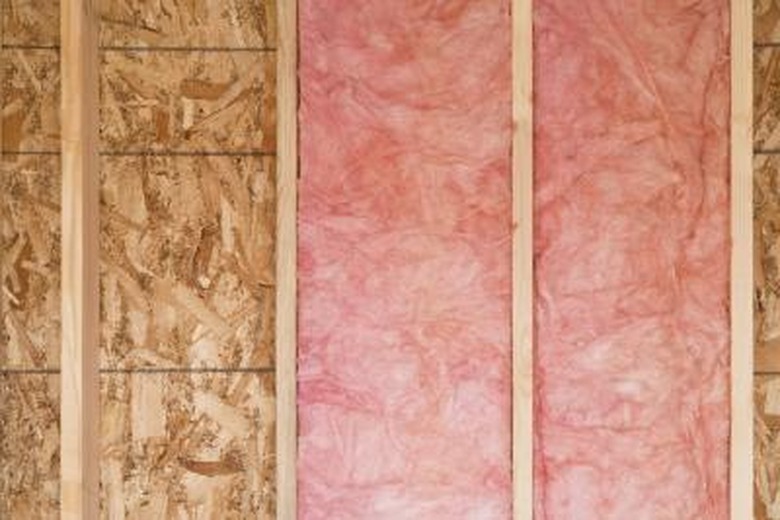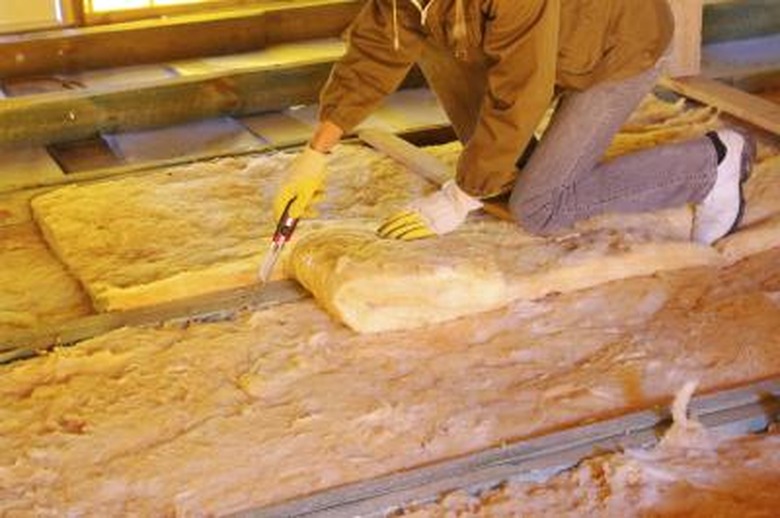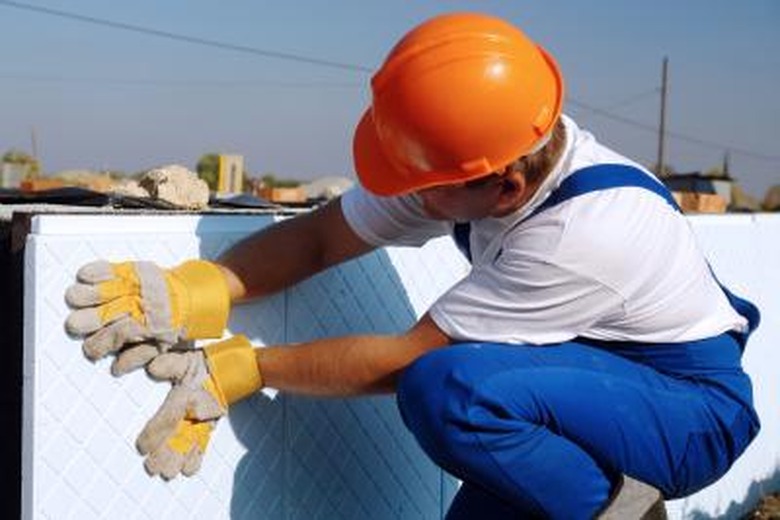Fireproof Insulation Materials
We may receive a commission on purchases made from links.
Adding insulation to your home can keep you more comfortable and lower your utility bills. But safety is also a consideration, especially when it comes to fires, to give your home a little more protection in case of an electrical fire or other fire sources. Fireproof insulation materials come in five primary forms: chopped fibers, foam, fibrous mats and textiles, board or block insulation, films and foils. The fire resistance of each form depends largely on the material used to make it.
Types of Insulation
Types of Insulation
Chopped fibers are loose and flow into holes and tight places more readily. Loose fibers can also be pressed into a mat or clothlike form by weaving, knitting, braiding or pressing with an adhesive.
Foam insulation is made from low-density plastics and other polymers. It's often sprayed on vertical or overhead surfaces in buildings or inside machines or electronics. Block and board insulation is made into sheets, strips, plates, or custom shapes. Films, foils, laminates, or ceramic composites increase fire resistance in close spaces.
Insulation Fire Resistance
Insulation Fire Resistance
Nearly all house insulation is rated fireproof. Most, however, only resist fire. The material is the biggest factor in how much fire resistance insulation has. Different materials can handle varying temperatures before burning.
Fiberglass batts shouldn't be used where temperatures exceed 212 degrees Fahrenheit. Glass wool handles temps up to 1,220 degrees F. Many fiber mat polymers handle temperatures up to 2,220 degrees F. Silicate-based (asbestos) insulation routinely handles temperatures in excess of 3,000 degrees F. Insulation materials may also be designed to resist chemicals, electricity, fuels, or solvents.
Fiberglass Insulation Fire Resistance
Fiberglass Insulation Fire Resistance
Fiberglass is melted glass, spun in a centrifuge whose holes spin out glass fibers like a cotton candy machine. It's a very common type of household insulation, available in either batts or as a loose-fill insulation. Fiberglass itself won't burn and doesn't need a fire-retardant treatment to make it fireproof. However, the paper or foil facing on fiberglass batt insulation can be combustible. They need to be installed using a code-approved barrier to avoid being a fire hazard.
Glass and Mineral Wool Insulation
Glass and Mineral Wool Insulation
Mineral wool is recycled from iron ore blast furnace slag or made directly from natural rocks and is virtually noncombustible because of its high melting temperature. The mineral wool insulation excels in thermal applications. Glass wool, made from fused sand and recycled glass, traps air and blocks heat, cold and noise. Lightweight, pest-proof and flexible, glass and rock wool insulation installs easily, often coming in rolls that you can cut to length and install yourself with the proper protection.
Fibrous Mat Insulation
Fibrous Mat Insulation
Fibrous mat insulation is made from six different minerals collectively known as asbestos. Asbestos possesses great strength, high resistance to heat and chemicals, and doesn't conduct electricity. Despite the well-known health risks, few alternatives are available to replace asbestos, and it continues to be used for everything from shingles to clutch parts. Various low-melting-temperature polymers and aluminum oxide alternatives are expensive and lack the effectiveness of asbestos.
Cellulose and Foam Insulation
Cellulose and Foam Insulation
Cellulose insulation is often made from recycled newspaper and is made to resist fire with added chemical flame retardants. It's not fireproof, however. Cellulose treated with fire-resistant chemicals will ignite at 300 degrees F, losing its fire-retardant properties. It's used as a loose-fill insulation in areas like unfinished attics and wall cavities, and they can be used to insulate new or existing homes.
In its foam incarnation, it's less combustible, but still may ignite at high temperatures. Polyisocyanurate and polyurethane foam insulation has been known to produce gasses that cause respiratory distress, liver and reproductive damage, headaches, and eye irritation. Rigid foam insulation using expanded polystyrene doesn't produce harmful gasses.
Icynene produces an open cell foam using a mixture of carbon dioxide and water. Air Krete foam is made from magnesium oxide from seawater. Air Krete is cleaner to manufacture and doesn't produce noxious gases.
Types of Specialty Insulation
Types of Specialty Insulation
Films, foils, and laminates are thin-application insulation products made with foams, fabric, metal, glass, ceramic, resin, or other materials. They're used in electronic or industrial applications where nearby heat sources can damage fragile electronics. Ceramic-based insulation is often used to form heat-resistant shapes for pipe supports, chimney flues, or in machinery where vibration or impact might dislodge loose insulation. Ceramic insulation blocks can be cut into shapes for special applications.


